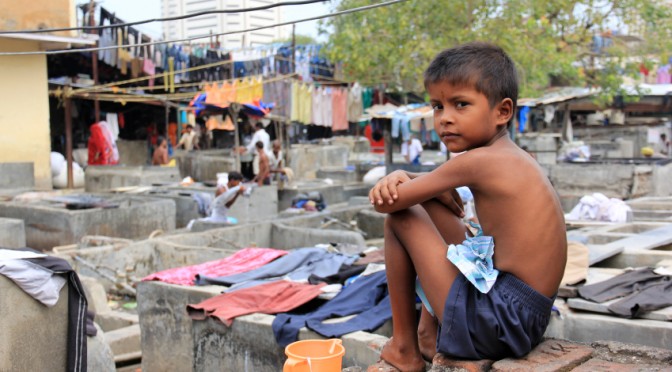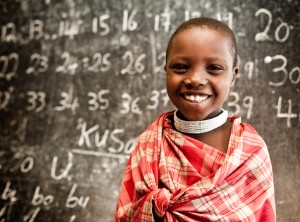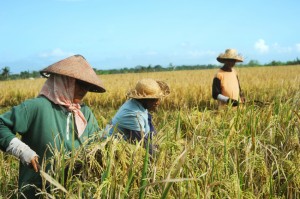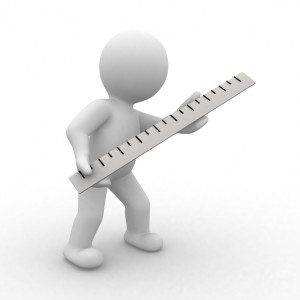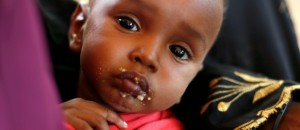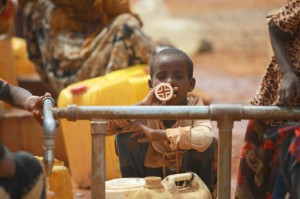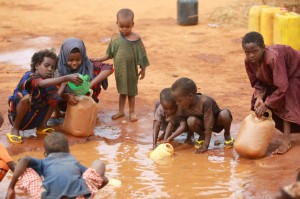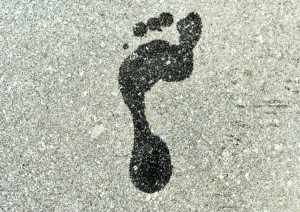WHY RELATIVE RATHER THAN ABSOLUTE POVERTY?
What’s the big difference with relative poverty? Aren’t we just splitting intellectual hairs instead of fixing a very practical problem?
In response to the above: quite a lot & no. First, let’s recognise there are indeed good reasons for introducing and maintaining the concept of “absolute poverty”, or “destitution” as the poverty entry on Wikipedia states. It makes poverty binary: you are either poor or you’re not. You either fall into the poverty category, or you don’t.
Such clear conceptual dividing lines help us identify who exactly are ‘the poor’, for example, when we are seeking to give aid and support to those that qualify as ‘poor’. It is also easier to take existing, well-documented national and regional gross domestic product (GDP) figures, divide them by the relevant population figures & hey presto: you have a measure of the average annual GDP per capita for a given population.
You can then do the maths to determine what the average GDP/capita figure per day is for that country, region, city or district & determine whether that location thereby falls above or below the notional ‘extreme poverty line’ of US$1.25 per person per day. (As an example of this, refer to the ‘Poverty Map’ in the ‘Resources’ section of the sidebar on the right of this post).
DEVIL IN THE DETAIL?
There are “lies, damned lies and statistics”, as the quote attributed to Benjamin Disraeli goes. A lot of significant truth can be concealed within generalised statistics and we are thus right to be somewhat wary of them at face value. However, they can also be very useful for certain purposes, when used intelligently. Consider the excellent short video by the statistician Hans Rosling, called “200 Countries in 200 Years” on YouTube. You too will believe a statistician can be interesting!
Rosling brings out some important details from vast quantities of United Nations data, showing (for example) that averages for certain regions in China conceal vast differences in the diversity of the underlying reality. If this is true even when we are using simple measures like GDP per capita per day, consider how much more relevant detail on true, underlying poverty is being concealed, once you understand that there are multiple key indicators of poverty – and they are ALL relative.
So our position is this: by all means KEEP the concept and associated measures of absolute poverty, but recognise that a better image of the underlying truth will be gained by understanding that poverty is fundamentally a relative concept. We understand how ‘poor’ a person is by comparing them with other persons – usually their community of ‘peers’. Just like we understand (internationally) how ‘tall’ a person is by comparing them with those around them, rather than some globally agreed, common standard for “tallness“.
MONEY IN MY POCKET OR FOOD IN MY BELLY?
Let us illustrate the point about relative poverty with some extreme examples. Imagine a billionaire flying her jet suddenly encounters difficulties & has to crash land on a remote Pacific island. She has plenty of money, but no immediate access to the basics of life, unless she can find water, food and shelter from the elements and potentially hostile local wildlife. In that sense, her money counts for nothing. For an entertaining exploration of this kind of experience, try watching the film Castaway, with Tom Hanks, or try reading the book ‘Robinson Crusoe‘ by Daniel Defoe.
Now, consider a different, imaginary end of the spectrum: a remote Amazonian tribe that has little contact with the rest of the world and avoids using currency. They may not show up on the national GDP figures at all, but they know how to fend well for themselves in terms of what really matters for sustaining human life. Common sense tells us that in that way at least, they are ‘richer’ than certain otherwise ‘wealthier’ people, who for various reasons do not have access to the basics of life. It is ready ACCESS to those basics which matters most when overcoming poverty; it’s not always about the money.
WHAT ARE THE 7 HUMANITARIAN BASICS?
When it comes to understanding relative poverty, we refer to these core poverty indicators as the 7 Humanitarian Basics. Poverty is therefore helpfully understood as “the relative absence of the 7 Humanitarian Basics”; or in simplified, 5-year-old language: “not enough of 7 things we need“. In order, these are: water; food; clothing; shelter; healthcare; engagement; and freedom from oppression. These are represented by different colours in the 7 Layer Poverty Model below. Can you guess which colour water is?
Other posts on this site cover each of those poverty assessment indicators in more detail, but each one of them is understood to be RELATIVE when it comes to measuring poverty. Yes, they can each be measured in absolute terms (eg how many litres of water drunk per day, how many calories etc), but their significance in the context of overcoming poverty is best understood in relative terms for the individual concerned. We are interested in the quality of the water being drunk, the suitability of the food available for the individual suffering hunger.
HOW DOES RELATIVE THINKING HELP SOLVE REAL POVERTY?
It helps by better identifying the real problems we are seeking to tackle, in overcoming poverty. Being better informed helps us make better overall choices about the allocation of finite resources, our priorities and the focus of our collective attention. Let me illustrate with a story. A friend called Gemma was sponsored by a charity to stay with a family in rural Kenya during her gap year, ahead of studying International Development at a UK university. The family she stayed with was well educated and relatively well-off compared to others in their community. While staying with the family, my friend said that another charity had distributed a number of water purifiers to the local community, intended to try to help them improve their water quality.
Gemma explained that the locals had a reasonable understanding of the local water supply and what to do to keep it safe and drinkable. However, they were rather distrustful of the water filters, as they could not be sure when they would cease to be as effective as just boiling the water. Also, the filters worked so slowly, they were impractical to use for a typical local household. Thus, the clever filters were left on the shelf to gather dust.
I am sure that the charity distributing the filters meant well and that they were able to report to donors just how many extra ‘poor’ households were now enjoying clean water, thanks to those filters! I do not know how much the true end-to-end cost was of approaching donors, administering the donations, procuring the filters, shipping them to Kenya, distributing them to selected communities and providing training to the locals on their use. What I CAN say with confidence, is that the end result of all that effort, was that they did not improve that specific family’s daily lives one bit.
I don’t know about you, but experiences like that leave us sad, frustrated and wanting to be more effective. We believe a better global understanding of poverty as a relative term is important and it WILL make a positive difference on the ground – by facilitating better uses of existing resources and efforts to overcome poverty.
We aim for a billion people to better understand the true nature of poverty, through the 7 Layer Poverty Model. We want those people to help focus the fixers of poverty, by promoting a clearer understanding of the problems and hence a better idea of how to go about fixing them. Look through our other material on how to Map Poverty with ‘assessments’ and ‘poverty profiling’. Also discover how the Model can help ‘Focus Fixers’.
You will begin to see how these three logical steps all link together and can all play their part in solving relative poverty, together with the ‘absolute’ kind.
And thanks again for being…
One in a Billion!

